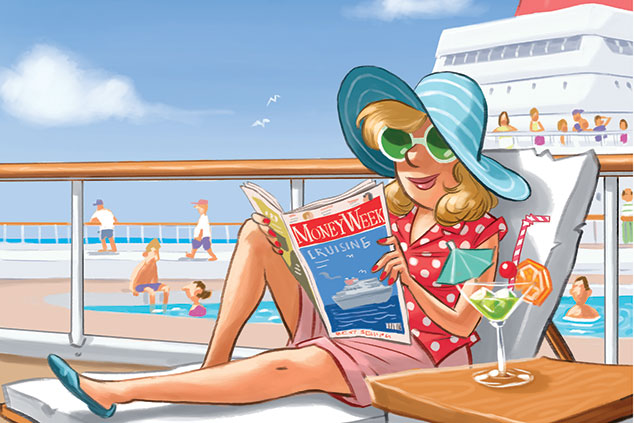
Favourable demographics, an expanding global market, and resilience to economic downturns and increases in supply all bode well for the long-term future of the cruise industry, says Stephen Connolly.
Cruise holidays are something everyone seems to have an opinion on – people either love them or hate them. Speak to analysts and investors, however, and the view tends to be positive, which is hardly surprising – profits at the leading operators have doubled or even trebled over the past five years. But does this strong performance mean investors have missed the boat?
In a word: no. Recent results were better than analysts had hoped for, and outlook statements have been upbeat. The industry has been telling investors that existing ships are full and demand for berths high. To carry even more passengers, nearly $10bn of brand-new ships are launching in 2019, more than in any previous year, according to Cruise Industry News. While boosting capacity doesn’t automatically mean more travellers, decisions to add ships – they’re far from cheap and take years to build – aren’t taken without a strong conviction that rising passenger trends are sustainable.
Continuous growth
Backing the cruise operators’ confidence doesn’t seem a bad bet. They have a 20-year-plus record of unbroken annual passenger growth. Since 2000, the global total has increased at a compound rate of around 8% a year to 28 million today. They’ve incrementally added new ships and been largely adept at filling them, competently managing the relationship between demand for cruises and the supply of berths.
This isn’t to say there haven’t been difficulties. Cruising is just as vulnerable to what economists call “external demand shocks” as many other sectors. And it’s had four: the 9/11 terror attacks on the US in 2001; the second Gulf War in 2003; the financial crisis in 2008/2009; and the capsizing of the Costa Concordia cruise ship off the coast of Italy in 2012. But, crucially, these unpredictable hits aside, the industry has generated positive quarter-on-quarter changes in the so-called net yield – the money made from each cabin or bed over 20 years.
“Nearly $10bn of brand-new ships are launching in 2019, more than in any previous year”
This in turn suggests the industry is less adversely affected than might be expected by more general economic downturns or additional supply from the delivery of new ships. From 2004 to 2007, for example, new capacity was up by more than 20%, yet net yield growth remained positive. It was the same from 2010 to 2012, when capacity climbed 7%, and 2015 to 2017 when supply of berths rose around 4%. This trend was reinforced recently when, considering the latest round of capacity growth, Richard Fain, boss of the $27bn stalwart Royal Caribbean Cruises said, “It’s clear that the market is not only absorbing it, but raising its prices. That sounds pretty healthy to me.”
Subscribers can read it in the digital edition or app